Charger GyrFalcon All-44 (Enova)
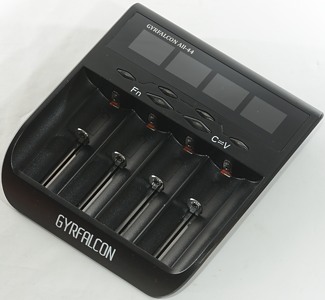
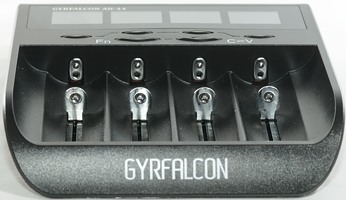
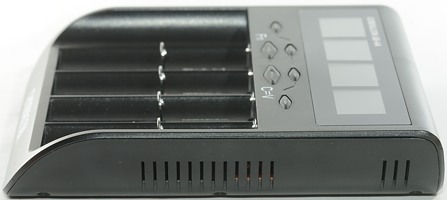
Enova makes many different chargers, this time I have got a 4 slot version of their largest universal charger (8 slot). The charger uses the same design, but there is some small changes.
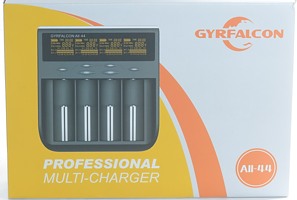
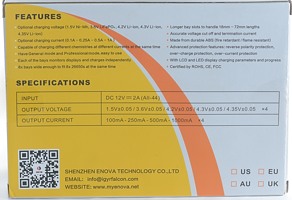



I got the charger in a cardboard box with specification on it.
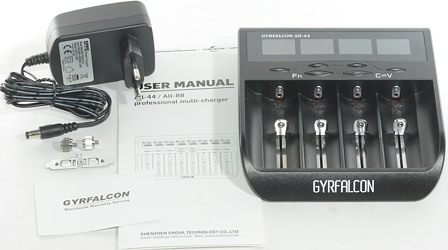
In the box was the charger, a power supply, a instruction sheet, the warranty card, two spacers and two terminal extensions.
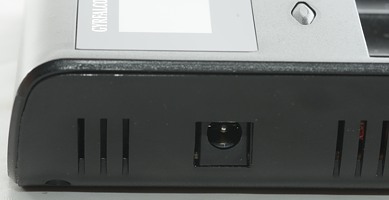
The DC input is the usual barrel connector and it is rated for 12V input.
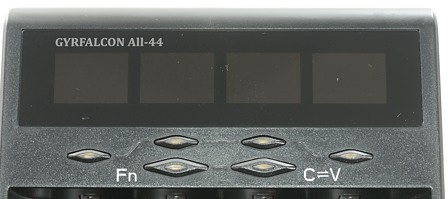
The full user interface with 4 readouts and 6 buttons, one for each slot and two special buttons. All buttons has a leds in them.
The slot buttons will show a blue led while charging and a red led when done.
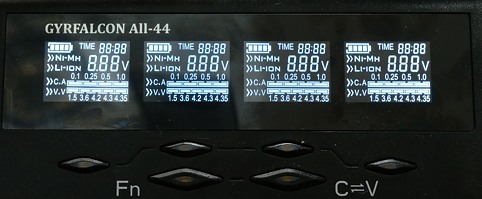
The display has many elements on it, because the charger can handle many types of cells.
Depending on mode not all the elements are used.
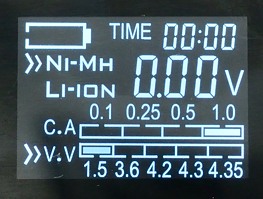
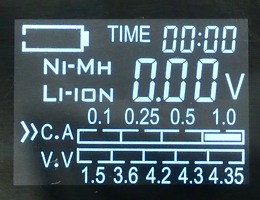
First image is manual mode and second image is automatic mode (No block or marker for VV line). Hold down Fn and CV for some seconds to change mode.
In automatic mode the slot buttons is only used to change current, selection of voltage and starting is automatic.
In manual mode some more button presses are needed:
Start a slot (Method 1):
Press button for slot to select it.
Press button for slot again to select voltage.
Press CV to select current setting.
Press button for slot to select current.
Press CV to select voltage setting again.
Hold button for slot down to start charging.
Start a slot (Method 2):
Press button for slot to select it.
Press button for slot again to select voltage.
Hold button for slot down to start charging.
Press CV to select current setting.
Press button for slot to select current.
The above methods are rather long if you want to charge many cells, the charger has some shortcuts to handle that:
Hold button for charging slot down and tap button for other channel will copy the settings tio all slot in between and start charging on these channels.
Hold Fn down and press CV will select 1A and 4.2V charge voltage for all idle slots, pressing multiple times on CV will change voltage.
These short-cuts means that charging any number of (4.2V) 18650, 26650, 32650 can be started by holding Fn down and tapping once on CV.
Charging any number of AA can be starting by holding Fn down and tapping CV twice.


Here the charger is working with a couple of different cell, each with its own setting.
The C.A line shows selected current and is also used to select current when the ">>" marking is at this line.
The V.V line shows selected charge voltage and is also used to the select voltage when the ">>" marker is flashing at this line.
The battery icon is animated when the charger is charging.

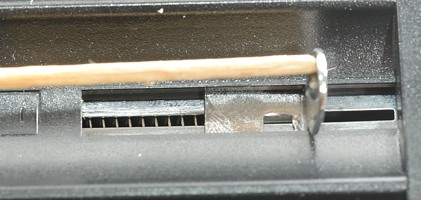
The sliders work very smooth and can handle from 32.0mm to 72mm, up to ø26mm cells can be placed in each slot and it is possible to use ø32mm cells in the slots, but not in slots next to each other.
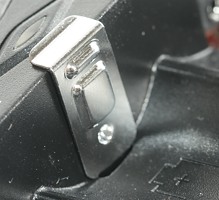
Using this accessory 32650 cell can be charged.
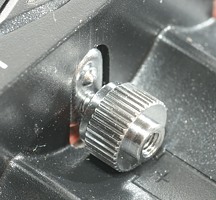
Using the spacer shorter cells can be charged, each spacer is about 8mm.


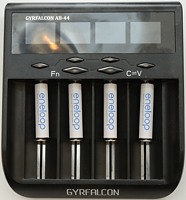
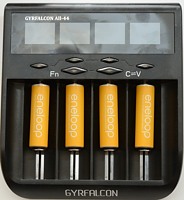
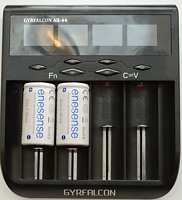
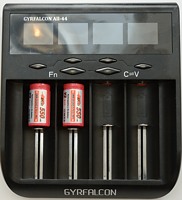
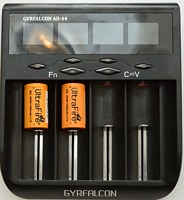
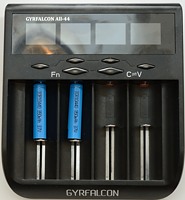
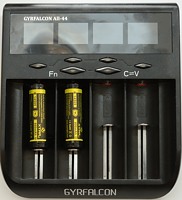
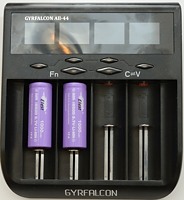
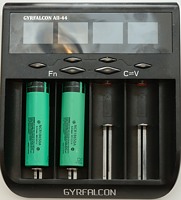
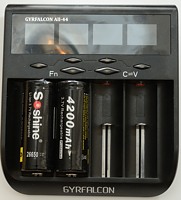
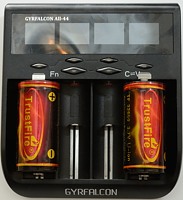
The charger can handle 72 mm long batteries including flat top cells.
With 10180 cell the 100mA charge current is on the high side, but because most 10180 are high current cell it will usual be acceptable.
Measurements on charger
- Power consumption when idle is 0.7 watt
- Will discharge a LiIon with 0.1mA when not powered.
- Will discharge a LiIon with 0.7mA when not charging.
- Will discharge a NiMH with 0.03mA when not powered.
- Will not charge at 0 volt.
- NiMH charging start at 0.6 volt with selected current.
- LiIon charging start at 0.6 volt with a 50mA.
- LiIon current will drop to 20mA as voltage increases, at 3.0V selected current will be used.
- Meter starts working at 0.7 volt.
- Meter is within 0.01 volt.
- Meter stops updating when battery is full.
- Meter will not reduce reading.
- Charger will restart silent if LiIon battery voltage drops below 4.05 volt.
- Power cycling and insertion of a battery requires button press to start charging in manual mode.
- Power cycling and insertion of a battery will automatic select NIMH/LiIon and start charging in automatic mode.
- Charger has a time limit of 10 hours, except NiMH at 1A where it is 5 hours.
Charging 4.20V LiIon cells
%20%231.png)
A good CC/CV charge curve with about 80mA termination current.
%20%232.png)
%20%233.png)
%20%234.png)
All the other slots look the same, but there is a small variation in charge voltage and a bit larger variation in charge current, but neither is a problem.
%20%231.png)
%20%231.png)
Different capacity means changes in charge time.
%20%231.png)
This old cell reaches CV phase fairly fast.
%20%231.png)
%20%231.png)
The 0.5A current is fine for 14500/18350 and other cells with 0.6Ah to about 1.3Ah and it works fine.
%20%231.png)
Here I tried lowest charge current, it works fine and has a low termination current (good).
.png)
The charger can charge 4 cells with 1A simultaneous.
.png)
Doing this requires about 2A from the power supply.
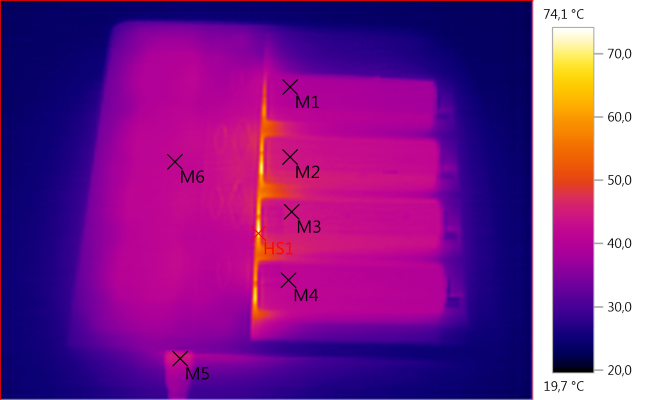
M1: 39,5°C, M2: 44,3°C, M3: 44,3°C, M4: 41,5°C, M5: 44,1°C, M6: 41,7°C, HS1: 74,1°C
The charger and batteries are about 44°C warm and inside the charger there is a hot electronic part, both are acceptable.
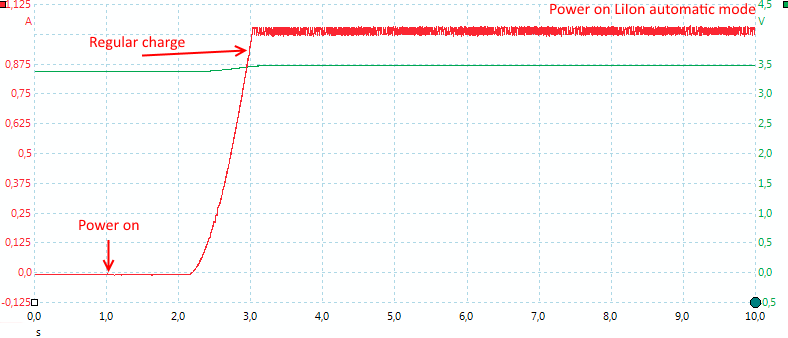
The charger will start automatic after about 1.5 to 2 seconds.
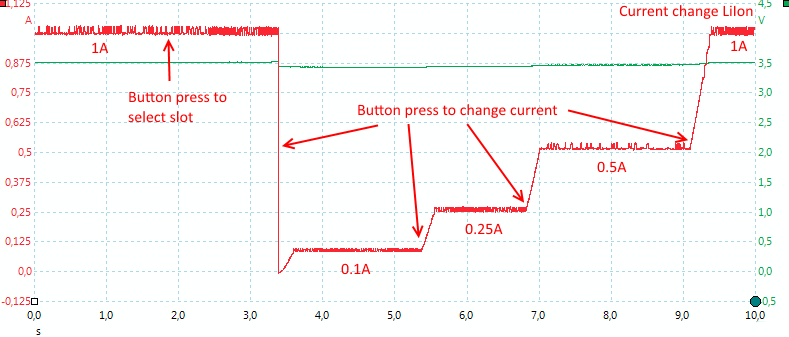
It is possible to change current during charge. In automatic mode just press the slot button. In manual mode first press the slot button, then the CV button, now the slot button can be used to change current.
Charging 4.35V LiIon cells
%20%231.png)
The charger supports both 4.30V and 4.35V cells, I only did a test with 4.35V and it looks fine.
Charging 3.6V LiFePO4 cells
%20%231.png)
%20%231.png)
The charger works fine with LiFePO4 cells. The charger uses a low current until the cell reaches 3V, then it will switch to selected current. For fully discharged LiFePO4 cells it can mean that charging takes an extra hour.
Charging NiMH cells
In manual mode it is possible to start a NiMH cell on a LiIon program, but it is not dangerous. Charge current will be low and the charger will stop after a few hours.
%20%231.png)
The NiMH charging stops on -dv/dt and looks fine.
%20%232.png)
%20%233.png)
%20%234.png)
On all slots, there is a small difference in current, but that is not important.
%20%231.png)
%20%231.png)
%20%231.png)
The 3 high capacity cells are also terminated perfectly.
%20%231.png)
No problem with an AAA cell.
%20%231.png)
Even at 0.1A the charger will terminate. This test would terminate earlier in the release version due to the 10 hours timeout (This timeout is missing in my test version).
%20%231.png)
As usual -dv/dt is some time to terminate on a full cell, about 10 minutes is a fairly good time.
.png)
The charger has no problems with charging 4 cells at full current.
.png)
With NiMH it uses about 1A from 12 volt.
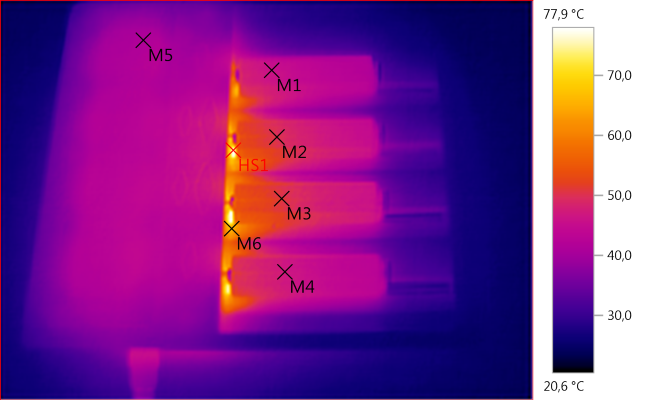
M1: 46,0°C, M2: 50,3°C, M3: 51,0°C, M4: 47,1°C, M5: 41,4°C, M6: 65,4°C, HS1: 77,9°C
The charger heats the NiMH cells and the temperature is at the limit.
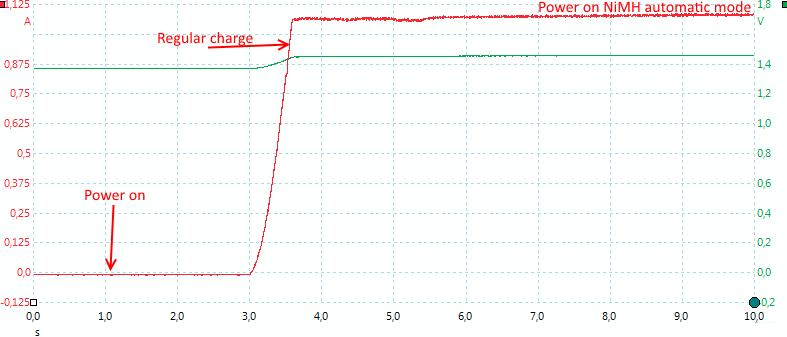
Starting is exactly the same as for LiIon.
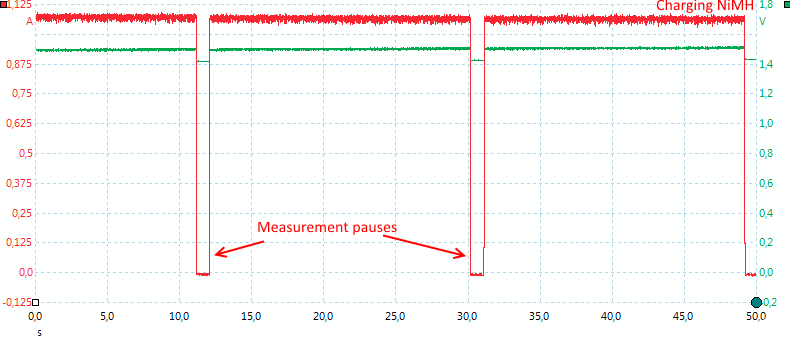
With NiMH the charger stops every 20 seconds to check the voltage of the cells.
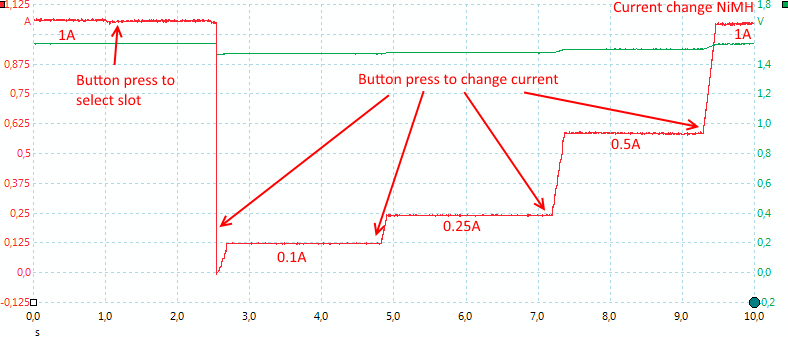
Current change also works the same as for LiIon.
Testing the transformer with 2830 volt and 4242 volt between mains and low volt side, did not show any safety problems.
Conclusion
In automatic mode the charger works like any other good charger and will charge 4.2V LiIon and NiMH cells with a default current of 1A (A press on a button will change the current). Switching to manual mode the charger can charge most round cells on the market, at the cost of some more button presses.
I do not like the slot extension, I doubt I can find them when I need them. A longer bar on the plus side would have been much better (This is only relevant if you need to charger 32xxx cells).
I will rated this charger as a very good charger, especially if you have many different types of cells.
Notes
The charger was supplied by Enova for review.
Here is an explanation on how I did the above charge curves: How do I test a charger

































%20%231.png)
%20%232.png)
%20%233.png)
%20%234.png)
%20%231.png)
%20%231.png)
%20%231.png)
%20%231.png)
%20%231.png)
%20%231.png)
.png)
.png)



%20%231.png)
%20%231.png)
%20%231.png)
%20%231.png)
%20%232.png)
%20%233.png)
%20%234.png)
%20%231.png)
%20%231.png)
%20%231.png)
%20%231.png)
%20%231.png)
%20%231.png)
.png)
.png)



